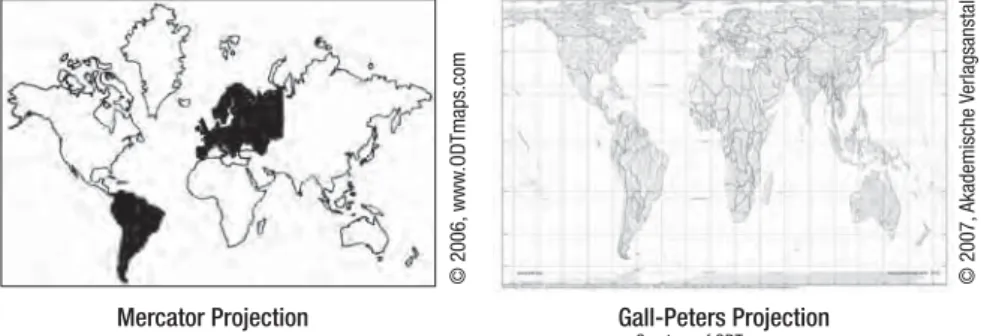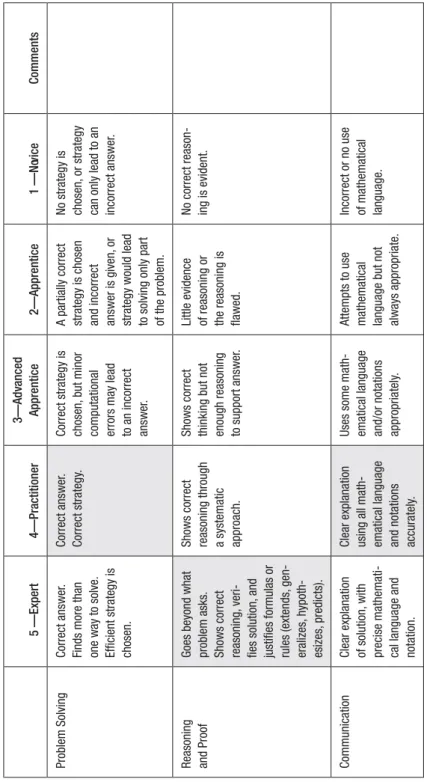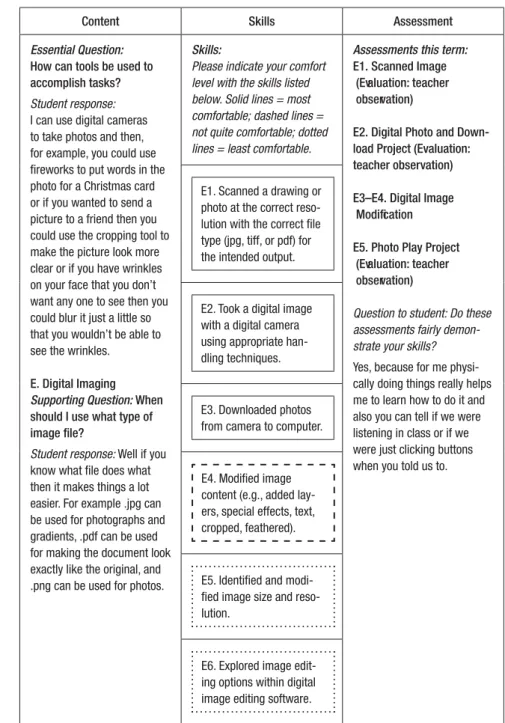The views expressed or implied in this book should not be interpreted as the official positions of the Association. All web links in this book are correct as of the publication date below, but may have become inactive or otherwise changed since then.
A NEW ESSENTIAL CURRICULUM
The word essential comes from the Latin word esse, which means "to be." Combined with Webster's definition, "to distill to the core," App. A dynamic view of what must be new and essential in the curriculum requires a proper, bold rethinking of the "place called school." Four key program structures influence the curriculum: timetable (short and long term); the way we bring our students together; personnel configurations; and the use of space (both physical and virtual).
UPGRADING THE CURRICULUM
- Develop a pool of assessment replacements. Once you are clear about the defi nitions of assessment types, I suggest that you
- Teachers, working with IT members, identify the exist- ing types of software, hardware, and Internet-based capabilities in
- Share the assessment upgrades formally with colleagues and students. When these replacements are identifi ed, the curriculum
- Insert ongoing sessions for skill and assessment upgrades into the school calendar. It seems a contradiction in terms to make
Plan to replace specific content, skills and assessment practices with a 21st century upgrade in the unit. To make 21st century skills meaningful for specific students, the key is to translate them into very discrete classroom applications linked to the assessment types and to curriculum content.
UPGRADING CONTENT
Standard upper elementary curricula in the United States often allow for an overexamination of the US seed. In the United States, one of the most striking signs of global awareness is the growth of soccer in schools over the past 30 years.

NEW SCHOOL VERSIONS
Rather than jumping straight to the question of block schedules versus traditional schedules, the bigger questions should be: What type of time frame fits the nature of the task. How many weeks will my learners need to shadow a professional in an internship model to gain a rudimentary understanding of the world of work. The second disadvantage is that 80 percent of the students in the accelerated program are male, which is surely statistically significant.
Having said this, it is the internal connections and the communication between colleagues in a place that is crucial for the development of the individual student. Many of the winners do not have large budgets, but they focus on how best to support engagement on the part of their students. New school designs, and even the reformation of existing school programs, must do more than stay outside the box—they must dump the box altogether.
The most important thing is that the motivation for the specific reform is too often detached from the curricular and teaching needs of the specific learners. The curriculum should then be determined based on their needs, followed by consideration of each of the main structures accordingly.
FIVE SOCIO-TECHNOLOGY TRENDS
The power of digital disorder (Weinberger, 2007) arising from all knowledge being everywhere at once makes the human capacity for pattern recognition, critical thinking, nuanced perceptions, and dealing with ambiguity very difficult. more important than research. for certain outcomes (Edelman, 2006). What are some examples of the power of mass collaboration, the use of prediction markets and crowdsourcing applications. So what does all this have to do with learning and teaching in the global knowledge network economy of the 21st century.
Identities created by self-determined learners using all available social media are scattered across the web. Indeed, investigations following a campus or school rampage will often focus on the perpetrators' online affinity groups. We look at socio-technological trends in social production and social networking in the context of the World Wide Web as we watched it develop in its first 5,000 days.
All of these amazing, breathtaking images are an example of the web that we will take for granted in three to five years. As teachers, we have always placed confidence in the order and scope of the learning process and have strived for certainty of results.
A CLASSROOM
The globalization of economies and the rise of Asia are central facts of the early 21st century. And other parts of the world, such as Russia and Brazil, are also predicted to grow in importance, as part of the "rise of the rest" (Zakaria, 2008). In the second half of the 20th century, the United States set the world standard of excellence.
This stock of human capital has helped the United States become the world's dominant economy and take advantage of globalization and expanding markets. Preparing for the competitive global labor market and for citizenship in the interconnected world of the 21st century is crucial for all young people. The lack of timely educational resources about other parts of the world used to be a major limitation in teaching about the world.
Teachers preparing for tomorrow's learning environments need greater knowledge of the world. When every school in the United States has ongoing partnerships with schools in other parts of the world, enabling students to learn through real or virtual exchanges with their international peers.
MAKING LEARNING IRRESISTIBLE
Coaches do a very similar thing: they build teams through a culture of personal contribution, and the team is the product of relentless hard work in skill building for a single goal—the emotional charge of publicly demonstrating personal best performance in cooperation with teammates. But when the same students are asked, "Is this the very best you can do?" the answer is inevitably a hesitant “Well, no. One of the subject coordinators described these meetings as "getting a master's degree in just this school." The subject area coordinators then shared the most important outcomes of these meetings with the teachers in their curriculum area.
They were able to take the students much deeper into the content as they guided their research into the single point of the film project – the thesis statement. It has to be perfect.” The fact that the teacher serves as a gatekeeper to actually touch the coveted digital. Don't the red numbers at the top of the graded test sheet motivate students to do their work.
It can't touch you like our movie can." The fact is, making a poster for a school project is much easier than making a movie, but this kid sees the value of the extra effort and hard work that goes into to produce a film. It's like learning on steroids." The creation through this medium is authentic, is real and is meaningful to these students.
MEDIA LITERACY
Teachers in every school in the state are trained to incorporate standards-based media literacy lesson plans into the classroom. Today, the phrase "media literacy" has been co-opted by different groups to mean different things. The problem with the phrase "media literacy" is that it does mean different things to different people.
One of the main benefits of media literacy education is that it helps teachers meet state learning standards. Media literacy is interdisciplinary and easily integrated into key elements of existing/emerging curriculum. Media literacy connects the classroom curriculum to the living room curriculum.
The language of film is another rich source of media literacy in the English language art classroom. Pick up a math or science textbook and you won't find the phrase "media literacy" in the index.
DIGITAL PORTFOLIOS AND CURRICULUM MAPS
In the Richer Picture Portfolio tool, the contents page lists specific student notes that illustrate each of these expectations. In the case of the geometry scavenger hunt, students linked their work to specific expectations, such as "The student can communicate mathematically." Through this process, the teacher could see the progression of the student's problem-solving ability, even as the topics in the math curriculum changed.
Because the portfolio is digital, the data in the rubric can be used to improve the teaching process. The revision of the curriculum map represents a change in what the teacher will do in the classroom. In the first two reels of the year, Beckwith took a relatively traditional approach to the subject.
The students dutifully filled in the answers – but when it came time to give feedback to the students, Beckwith noticed that the students' answers were not very reflective. This exercise also allows the student to understand what will happen in the coming semester; a list of familiar skills means that.

EDUCATING
Responsible Local/Global Citizenship—Rights, responsibilities, and actions related to leadership and participation toward healthy and sustainable communities. Sustainable Economics - The evolving theories and practices of economics and the shift towards our economic, natural and social integration. Living within ecological/natural laws and principles-Laws of nature and scientific principles of sustainability.
Inventing and Influencing the Future—The vital role of vision, imagination, and intention in creating the desired future. Multiple Perspectives—The perspectives, life experiences, and cultures of others, as well as our own. How are we all going to live well within the possibilities of nature?” The question, in turn, was inspired by the definition of sustainability: to provide a rich quality of life for everyone and to achieve this through nature's resources.
The latest work involves network leaders and inspectors for 500 Empowerment Schools, which is based on the belief that decisions about how students should be educated should be made as close as possible to those who work with them – the principals in partnership with the school. Community. DISCOVER the “commonness” of our communities and our society—that which is shared by all, upon which we all depend, and for which we are all responsible.
POWER DOWN
This is the first time in history that many children are learning to use powerful tools outside of adult supervision. The problem, of course, is that these tools can disrupt traditional classroom management. What if we transformed the culture of teaching and learning to adapt to the power of these tools?
After all, our children are growing up in a time where they have instant access to the internet for information and global communication in their back pockets. Shouldn't we be providing our students with role models on how to harness the power of information and global communication? While technology freed children to leave the farm and go to school, there was a loss of real work and contributions to the community by children.
We have powerful, easy-to-use tools like screencasts and podcasts that give students opportunities to contribute content to the class. At the same time, we can also provide them with rigorous and more motivating assignments that better prepare them to become more productive in our new global economy.
